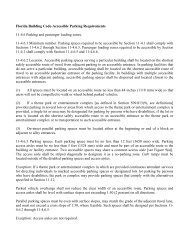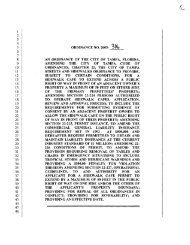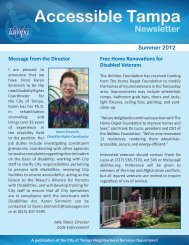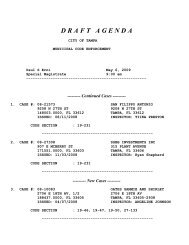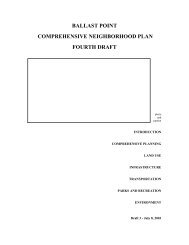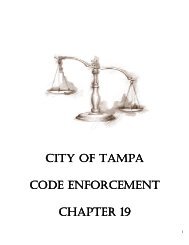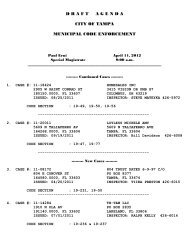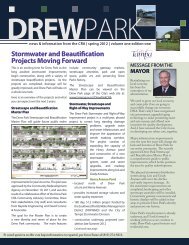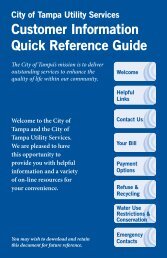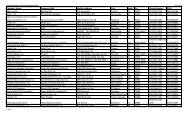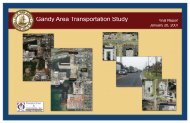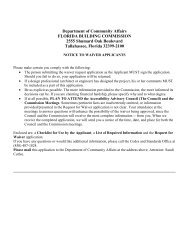Urban Design Guidelines - Valley Metro
Urban Design Guidelines - Valley Metro
Urban Design Guidelines - Valley Metro
You also want an ePaper? Increase the reach of your titles
YUMPU automatically turns print PDFs into web optimized ePapers that Google loves.
Page 12SYSTEM IDENTIT YThe urban skyline of this <strong>Valley</strong> is richbeyond compare. With its historicalstructures and recently designeddynamic buildings, this region hasalways sought to define place. It couldbe argued that rather than define a specificlook, what really has been developedis a collection of urban forms thatcelebrate resourcefulness and creativity.But, there can be no serious considerationof the architectural heritage in thisSonoran valley without acknowledgingthe pioneering work of Frank LLoydWright. It was his attention to humanscale, the harnessing of the sun’s danceof light and shadow, his partnershipwith the dramatic desert landscape, andhis use of indigenous materials whichhad a profound affect on every designerand every building that came after. Mr.Wright’s impact on this region continuesto endure the tests of time andoperate as a guide to our search for thebuilt identity of this light rail system.The system identity of the CentralPhoenix/East <strong>Valley</strong> light rail systemwill emerge as the logical, functional,and aesthetic integration of the physicalcomponents of the system and a celebrationof the desert cities it will serve.By carefully connecting with theuniqueness of the built or planned environmentalong the line, creating “oasislike” stations and platforms that act asurban climactic comfort zones, and creatinga sophisticated and uniquelylinked series of design elements, thesystem will derive a visual wholenessthat enhances its community image.The entire system and all its elementsmust be critically linked by an aestheticand functional philosophy that isinspired by the “place”. The idea thatthe system might be perceived andcherished as a linear desert oasis wouldbe ideal. Through a rigorous evaluationof all design elements in the system, astrong sense of connectionto the land must give the system itsmemorable character and rightness.The system identity will be the ultimateresult of all of the urban design goalsbeing accomplished in a successful andexemplary manner. All components ofthe system from the vehicle to OCS,from rail beds to stations, from furnitureto graphics, from color to materials,and from daytime sunlight andshadow manipulation to nighttime illuminationof the system will affect systemidentity.<strong>Urban</strong> <strong>Design</strong>Performance Criteria∆ Architecture and shelter must beresponsive to the desert climate andenvironment of the region.∆ An architectural kit of parts shouldbe established that will providedesign unity, universal functionality,and most importantly, overall systemidentity.∆ The architectural program shalldevelop a palette of colors, materials,textures, and vocabulary ofdesign solutions which will serve asa foundation for the system identity.∆ Citizens and visitors to the communitymust have their awareness ofthe “place” enhanced by the designof the system.∆ The system architecture shouldemphasize textural complexity toamplify the dynamic of the lightand shadow from the desert sun.∆ Develop asymmetrical massing ofbuilding forms rather than symmetricaland orthogonal constructs, thuscreating elements more naturallyappropriate to the remarkable geologicalfeatures of the region.∆ All components of the system architecture,art and landscaping shouldutilize a mix of shadow and sunlight,which reduces the negative



